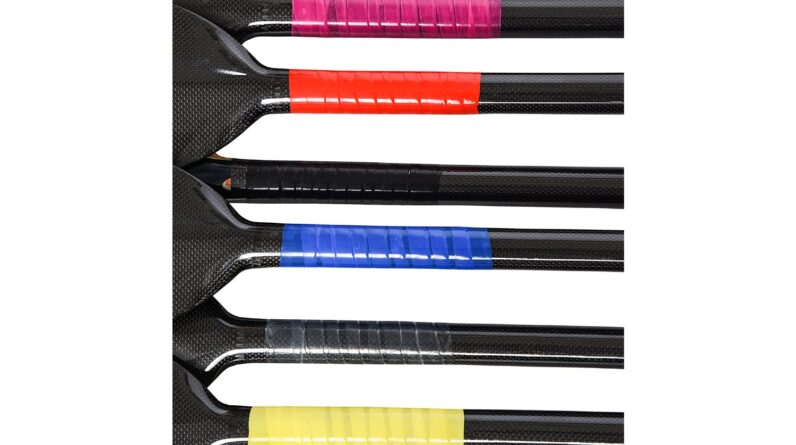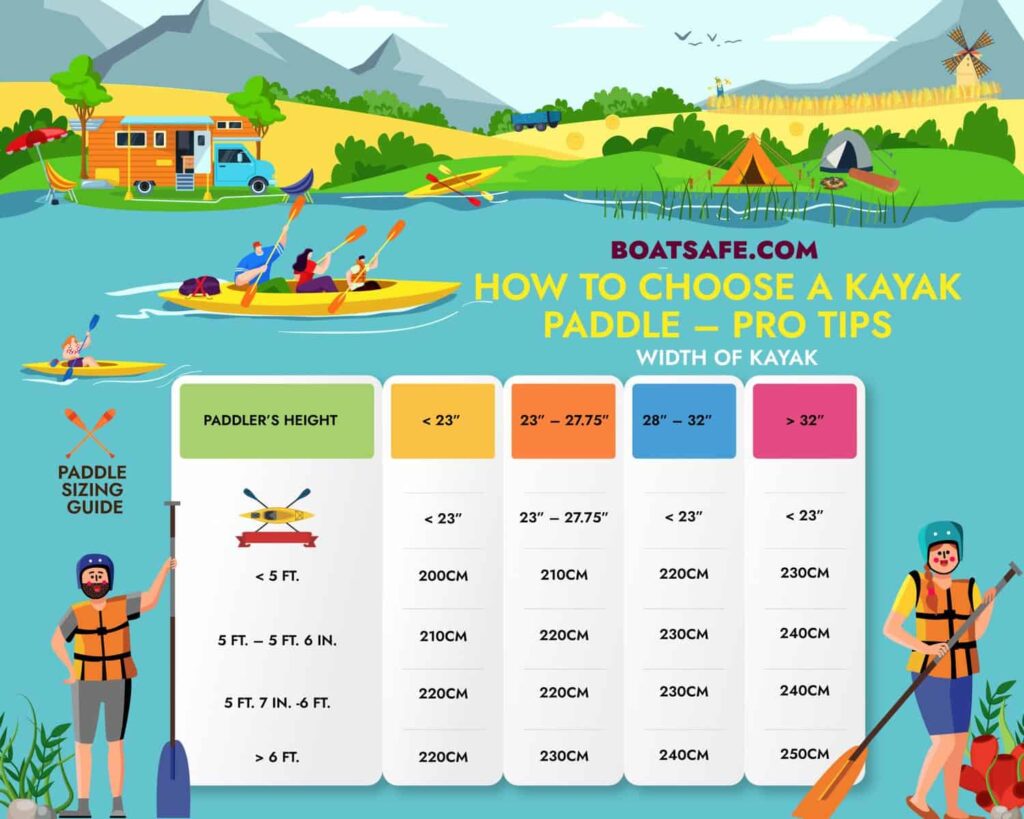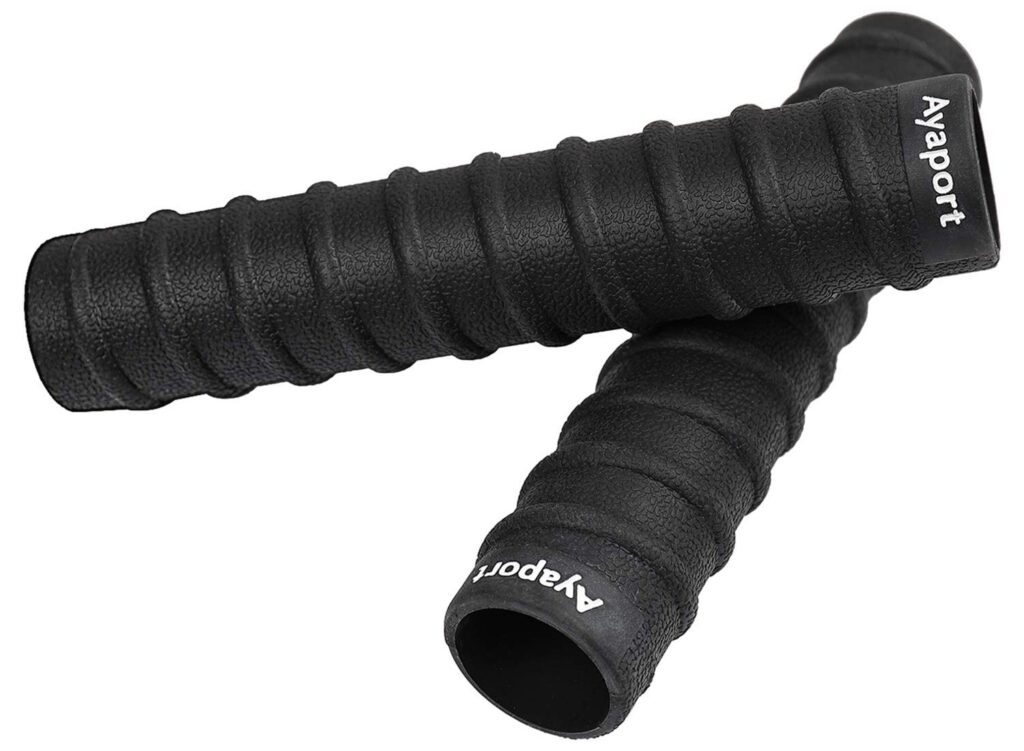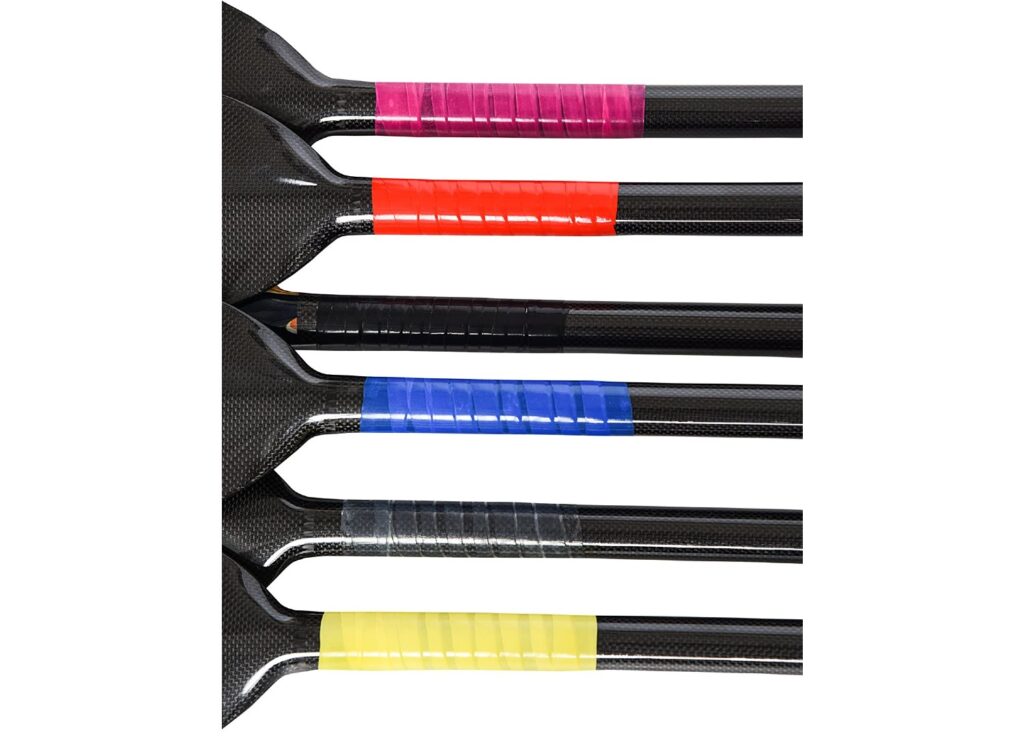
Are you in the market for a new kayak paddle grip but feeling overwhelmed by the countless options? Look no further! This guide has got you covered. Choosing the perfect kayak paddle grips boils down to two key factors – size and style. With the right size, you can ensure a comfortable grip that minimizes hand fatigue, while selecting the appropriate style can enhance your overall paddling experience. Whether you’re a beginner or a seasoned kayaker, read on to discover how to make the right choice for your next adventure on the water.

This image is property of www.boatsafe.com.
A Guide to Choosing the Perfect Kayak Paddle Grips
Choosing the right size and style of kayak paddle grips is crucial to ensuring a comfortable and efficient paddling experience. With a wide range of materials, grip designs, shaft lengths and diameters, blade shapes and sizes, weight options, durability factors, and price ranges available in the market, it can be overwhelming to decide which paddle grips are best suited for your needs. In this comprehensive guide, we will break down each aspect of kayak paddle grips and provide you with valuable information to help you make an informed decision.
1. Materials
1.1 Rubber
Rubber paddle grips are popular due to their excellent grip and shock-absorption properties. They provide a secure hold even when wet, which is vital for maintaining control while paddling. Rubber grips are also durable, making them a suitable choice for those looking for long-lasting gear.
1.2 Plastic
Plastic paddle grips are lightweight and affordable, making them a common choice for beginners or recreational paddlers on a budget. However, they lack the same level of grip as rubber grips, and their durability may not be as high. Plastic grips are suitable for calm waters and occasional use.
1.3 Foam
Foam paddle grips offer a comfortable and cushioned grip, reducing the risk of hand fatigue and blisters. They provide good grip, particularly when dry, but may become slippery when wet. Foam grips are often favored by kayakers who prioritize comfort during longer paddling trips.
2. Grip Design
2.1 Straight Shaft Grips
Straight shaft grips are the most traditional and widely-used design. They offer a simple, straight handle without any ergonomic features or contours. Straight shaft grips are suitable for those who prefer a classic grip style and do not experience hand discomfort or fatigue during paddling.
2.2 Ergonomic Grips
Ergonomic grips feature contours and shapes that align with the natural curves of your hand, providing enhanced comfort and reducing hand fatigue. These grips are designed to fit the shape of your palm, allowing for a more relaxed and efficient paddling motion. Ergonomic grips are recommended for those who spend long hours on the water or have hand or wrist issues.
2.3 Tapered Grips
Tapered grips have a gradual decrease in diameter from the top of the grip towards the blade end. This design offers versatility as it allows for different hand positions along the shaft, accommodating various paddling techniques. Tapered grips are suitable for individuals who prefer to switch between low-angle and high-angle paddling styles.
2.4 Oval Grips
Oval grips provide a unique shape that fits naturally in your hand, offering a secure and comfortable hold. The oval design prevents the grip from rotating, ensuring stability and control while paddling. Oval grips are recommended for paddlers who desire a consistent grip position and increased control over their strokes.
2.5 Wing Grips
Wing grips, also known as dihedral grips, feature a prominent ridge down the center of the paddle blade face. This design promotes stability, reduces flutter, and enhances efficiency by optimizing water flow during the stroke. Wing grips are ideal for advanced paddlers who engage in high-performance paddling and require maximum control and power.
3. Shaft Length
3.1 Determining the Optimal Length
The optimal shaft length for your kayak paddle grip depends on factors such as your height, the width of your kayak, and your paddling style. As a general guideline, the paddle length should be determined by adding your height to the width of your kayak, and then adding a few inches for adjustments based on personal preference. It is essential to choose a paddle with an appropriate shaft length to ensure efficient strokes and minimize strain on your body.
3.2 Paddle Stroke Efficiency
The length of the shaft can impact your paddle stroke efficiency. A longer shaft allows for a higher grip position, resulting in a more elevated and relaxed stroke style, suitable for low-angle paddling. On the other hand, a shorter shaft promotes a lower grip position, enabling a more aggressive and powerful stroke, preferred for high-angle paddling. Consider your paddling style and the water conditions you typically encounter to determine the most suitable shaft length for your needs.

This image is property of www.sailmagazine.com.
4. Shaft Diameter
4.1 Standard Diameter
Standard diameter shafts offer a comfortable grip and are widely used by recreational paddlers. They strike a balance between grip size and weight, making them a versatile option for various skill levels and paddling styles.
4.2 Small Diameter
Small diameter shafts are designed for paddlers with smaller hands or those who prefer a more delicate grip. They provide better control and reduce hand fatigue for individuals with less hand strength. However, small diameter shafts may not be as comfortable for those with larger hands.
4.3 Adjustable Diameter
Some kayak paddle grips offer adjustable diameters, allowing you to customize the grip size based on your preferences or to accommodate different users. This feature can be particularly beneficial if you plan to share your paddle with others who have different hand sizes or preferences.
5. Blade Shape
5.1 Low-Angle Paddling
Low-angle paddling involves a more relaxed and horizontal stroke style, suitable for recreational and long-distance kayaking. Paddle grips with a long and slender blade shape are optimal for low-angle paddlers as they provide smooth and efficient strokes.
5.2 High-Angle Paddling
High-angle paddling involves a more aggressive and vertical stroke style, ideal for maneuvering and quick acceleration. Paddle grips with a shorter and wider blade shape are recommended for high-angle paddlers as they generate more power and enable quicker strokes.
5.3 Hybrid Paddling
Hybrid paddling styles combine elements of both low-angle and high-angle techniques. If you engage in a mix of leisurely paddling and more dynamic maneuvers, consider paddle grips with a versatile blade shape that can accommodate both paddling styles.

This image is property of www.sailmagazine.com.
6. Blade Size
6.1 Blade Area
The blade area refers to the total surface area of the paddle grip’s blade. A larger blade area can generate more power and acceleration but requires more energy to propel through the water. Smaller blade areas are suitable for individuals with less upper body strength or those prioritizing efficiency and endurance during long paddling trips.
6.2 Blade Length
Blade length influences the amount of water the paddle grips with each stroke. Longer blades have a greater catch area, allowing for more forceful strokes, while shorter blades are easier to maneuver and control. Consider your desired paddling style and the water conditions you typically encounter when selecting the blade length.
6.3 Blade Width
Blade width impacts the paddle grip’s resistance during the stroke. Wider blades offer more resistance and therefore greater power, making them suitable for strong and experienced paddlers. Narrower blades, on the other hand, require less effort and are preferred by beginners or those looking for easier propulsion.
7. Weight
7.1 Lightweight Paddle Grips
Lightweight paddle grips are highly desirable as they reduce fatigue and strain on your wrists and arms during long paddling trips. Materials such as carbon fiber or fiberglass are commonly used to manufacture lightweight paddle grips.
7.2 Mid-Weight Paddle Grips
Mid-weight paddle grips strike a balance between weight and durability. They are often constructed with a combination of materials such as fiberglass and nylon for enhanced strength and performance.
7.3 Heavyweight Paddle Grips
Heavyweight paddle grips are typically more durable but may cause more fatigue due to their weight. These grips are commonly constructed with materials like aluminum or reinforced plastic, making them suitable for rugged conditions or whitewater paddling.

This image is property of www.sailmagazine.com.
8. Durability
8.1 Choosing Kayak Paddle Grips Based on Durability
Durability is an important factor to consider when selecting kayak paddle grips, especially if you are a frequent paddler or plan to kayak in challenging environments. Grips made from durable materials such as carbon fiber, fiberglass, or reinforced plastic offer excellent resistance to impact, bending, and wear.
8.2 Durability vs Weight
There is often a trade-off between durability and weight when choosing kayak paddle grips. While heavier and sturdier grips may withstand rough conditions better, they can contribute to increased fatigue. Consider your paddling preferences, skill level, and the expected conditions to strike the right balance between durability and weight.
9. Comfort
9.1 Padding and Cushioning
Some paddle grips come with additional padding or cushioning for enhanced comfort. These features help reduce pressure points and protect your hands from developing blisters or calluses. Consider your personal comfort preferences and the duration of your paddling trips when choosing paddle grips with additional cushioning.
9.2 Grip Shape and Texture
The shape and texture of the grip can significantly affect your comfort. Grips with ergonomic designs and contoured shapes conform to your hand’s natural position, reducing strain and enhancing comfort. Additionally, paddle grips with textured surfaces offer improved grip and prevent slippage, providing a more secure and comfortable paddling experience.
9.3 Hand Fatigue
Hand fatigue is a common issue among paddlers, particularly during long trips or intense paddling sessions. Choosing paddle grips that prioritize comfort, such as those with ergonomic designs or foam padding, can alleviate hand fatigue and allow you to enjoy your paddling experience for longer durations.

This image is property of seakayakexplorer.com.
10. Price
10.1 Budget Range
For beginners or occasional kayaking enthusiasts, budget-friendly paddle grips made from plastic or basic rubber materials may be a suitable option. These grips offer decent performance and durability at an affordable price point, making them accessible to a wide range of users.
10.2 Mid-Range
Mid-range paddle grips typically offer a balance between performance, durability, and cost. These grips may incorporate features such as ergonomic designs, lightweight materials, and enhanced durability, making them a favorable option for intermediate kayakers or those seeking a step up from entry-level grips.
10.3 Premium Range
Premium paddle grips are designed for serious paddlers who prioritize high performance and durability. These grips often incorporate advanced materials, ergonomic designs, and cutting-edge technologies to optimize efficiency and comfort. While they come with a higher price tag, they offer the utmost quality and reliability for professional or avid kayakers.
By considering the materials, grip design, shaft length and diameter, blade shape and size, weight, durability, comfort, and price, you can make an informed decision when choosing the perfect kayak paddle grips. Remember to assess your individual needs, preferences, and paddling style to ensure an enjoyable and efficient kayaking experience. Happy paddling!






